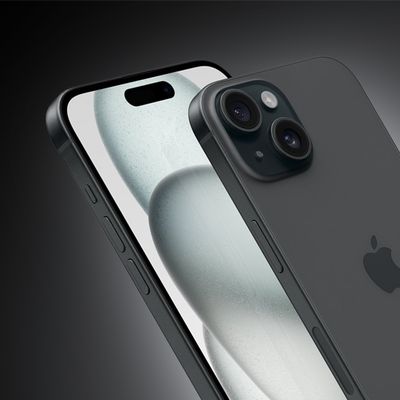Back before the iPhone X came out, there were rumors suggesting Apple would do away with the Home button by implementing Touch ID under the display of the device, preserving the fingerprint sensor while allowing for an edge-to-edge display.
That didn't end up happening and Apple ultimately replaced Touch ID with Face ID, but since then, other companies have implemented in-display fingerprint recognition technology.
OnePlus recently unveiled its new OnePlus 6T, one of the first commercially available smartphones in the United States that's using in-screen fingerprint recognition technology. We were able to get our hands on one of the new smartphones to see if Apple is missing out on anything with its Face ID implementation.
There are instances where a fingerprint sensor offers benefits over facial recognition. Face ID, for example, doesn't work well when you're laying in bed and the phone is held in landscape or when an iPhone is flat on a desk. With a fingerprint sensor, those are non-issues.
Fingerprint sensors have their own problems, though, and as we discovered with the OnePlus 6T, in-display fingerprint technology isn't as great as it sounds. OnePlus' implementation is slow and inaccurate, a major negative compared to Face ID.
With the OnePlus 6T, you need to make sure to place your finger in the designated spot on the display for your fingerprint to be recognized, and sometimes you need to hold it there for what seems like a long time before it reads the fingerprint. Touch ID and Face ID both unlock almost instantly, so the wait with the OnePlus 6T makes a huge difference.
Had Apple pursued in-display fingerprint technology its implementation might have been better than what OnePlus came out with, and there's still a chance the tech OnePlus is using will improve with software updates or future iterations, but we'll never know if Apple would have done it better.
Apple is all in on Face ID, which is now in both modern iPhones and iPads, and the company has said that other solutions, like in-screen or rear-facing Touch ID, were never under consideration once it decided to pursue Face ID.
Apple's Face ID technology is still so advanced that no other company, OnePlus included, has managed to match it as of yet. And in-display technology still has a ways to go, it seems, with most major Apple competitors instead opting for rear-facing fingerprint sensors as a way to achieve edge-to-edge displays.
Do you miss Touch ID and wish Apple would have worked towards an in-display fingerprint sensor, or do you prefer Face ID? Let us know in the comments.



















Top Rated Comments
I like having to touch the device to unlock it.
Yes, in optimal situations it works great. But when it doesn’t, it’s annoying.
I wish future iPhones could implement BOTH, but I know that would be costly and unlikely.
Apple is famous for never going back, so doubtful we will ever see Touch ID in iPhone again, even though a combination of the two would be killer.
==>
Really? I have no issues unlocking my Xs while lying down on the bed (towards left or right side).
And yes, I do not miss Touch ID whatsover. In fact I find it weird when I use Touch ID on my wife's iPhone.